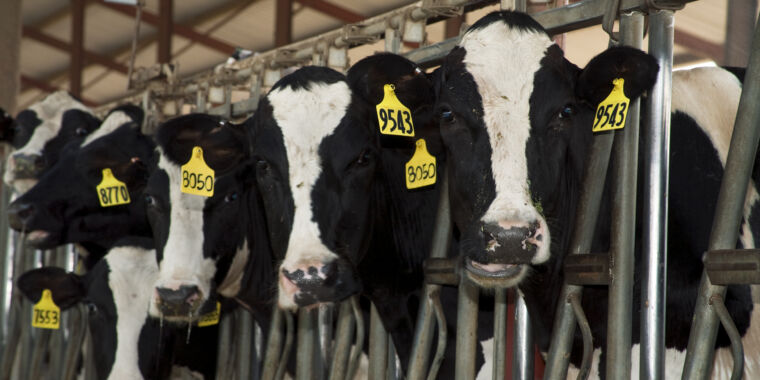A dairy worker in Michigan has tested positive for H5 avian influenza virus, marking the second human case of avian influenza linked to an unprecedented outbreak of the highly pathogenic H5N1 avian influenza virus among U.S. dairy cows.
According to the Centers for Disease Control and Prevention, the worker experienced only a mild eye infection and has since recovered, much like the first case in a Texas dairy farm worker. The Michigan worker worked on a dairy farm that raised cows infected with H5N1 and was being monitored for symptoms of infection.
CDC Principal Deputy Director Nirav Shah said at a news conference Wednesday afternoon that the person is part of an active surveillance system in which the state health department sends a daily text message asking if the person has symptoms. The infection was discovered because the employee said he had symptoms.
Health officials took nasal and eye swabs from the workers, and the CDC received the swabs for testing on Tuesday, confirming that the nasal swab was negative and the eye swab was positive that same day.
“We found this case because we were looking for this case,” Shah said, adding that the CDC and the state of Michigan were prepared and expected to find additional human cases. emphasized.
in Another statementMichigan Chief Medical Officer Natasha Bagdasarian stressed that the state is tracking the situation closely. “The current health risk to the general public remains low. This virus is being closely monitored and there are no signs of sustained person-to-person transmission at this time. This is exactly how public health is intended to work in the early stages of detecting and monitoring an emerging disease.”
The CDC also said the risk assessment for the general public remains low, but the outbreak highlights the risks and necessary precautions for people who have been in contact with infected or potentially infected animals, the agency added.
It’s unclear how the worker became infected, but the CDC suspects raw milk splashed into his eyes or he rubbed his eyes with contaminated hands. Raw milk from infected cows has been found to contain extremely high levels of the H5N1 virus. It is unclear at this time whether workers had access to personal protective equipment, such as face shields, which the federal government is working to distribute.
So far, testing by the CDC has only confirmed that the employee has H5 influenza. Further testing that could specifically classify the virus as H5N1 has not yet been completed. The CDC expects to be able to genetically sequence the virus within a day or two. At that point, researchers will be able to assess whether the virus is the same as the one identified in cows and whether it has acquired any worrisome mutations that could allow it to spread more easily between humans.
Because H5N1 has the ability to adapt to new hosts with each new infection, experts are anxiously monitoring the dairy cow outbreak, first detected in March, for signs that the virus may gain the ability to cause an outbreak in humans. As a precaution, the federal government is working to complete production of 4.8 million doses of an H5N1 vaccine that is closely matched to the virus circulating in dairy cows, Dawn O’Connell, assistant secretary for preparedness and response at the U.S. Department of Health and Human Services, said at a press conference Wednesday.
To date, the U.S. Department of Agriculture records: 52 dairy herds infected with H5N1 in 9 statesMichigan State reported 19 infected herds.
This post has been updated with new information from today’s press conference and statement.
